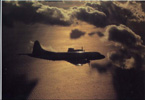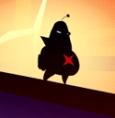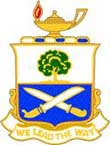Bliztk
Posts: 779
Joined: 4/24/2002
From: Electronic City
Status: offline

|
Well an interesting view about early Japanese-USN training is found here:
http://www.ww2aircraft.net/forum/aviation/wwii-naval-pilot-training-426.html
quote:
A lot of that kind of information takes a lot of reading, a lot of which you’ll never find on the net, and some of it can only be ferreted out from the actual reports and documents. That being said, I recently had reason to look into the subject and came up with the following.
The Japanese Navy had, as near as I can figure, some 3500 “front line” pilots of whom about one half were carrier current, that is, assignable to carrier squadrons. These numbers pretty much correlate with those of the USN/USMC. Just looking at active USN squadrons yields a similar number of available aviators. As far as carrier qualified pilots are concerned, that is a more difficult number ascertain from the sources I have available. I suppose a copy of “Sunburst” might clear some of this up for me, but I have yet to get around to purchasing a copy. USN carrier squadrons, at the end of 1941 only mustered about 580 flying slots in 38 squadrons. Land-based USMC VMF and VMSB squadrons probably accounted for another 200-250 readily available carrier qualified pilots. Certainly this was not the total pool of available carrier qualified USN/USMC pilots as it does not take into account carrier qualified pilots assigned to such mundane activities as training and staff positions, as well as land based squadrons. The same would be true of the IJN, there were undoubtedly many carrier qualified pilots not actually assigned to a carrier squadron and so operating. In preparing for the war, the IJN brought it’s operational aircraft up to a level of about 1800 aircraft, with about 1200 of them shore based and 600 ship based (aircraft carriers and battleship and cruiser scouts). If there were indeed only 1500 carrier qualified IJN pilots, then, obviously they had twice as many pilots as carrier pilot slots.
What was the final devastating factor for IJN aviation, both carrier and land based was their inability to make good their losses. While some like to believe that the cream of the IJN carrier aviators were wiped out at Midway, that is not exactly true. The loss of the four carriers in this battle meant that, no matter what, all of their aircraft were lost. So, probably about 256 planes were lost. This does not equate to the loss of 256 pilots; rather, the Japanese only lost somewhat less than100 pilots in the battle, most of whom met their ends aboard sinking carriers as opposed to air combat operations. Where the curve of the loss of experienced pilots started to drop off the chart was in the Solomons where both land based pilots and, thrown in as reinforcements, carrier pilot losses, went beyond the IJN’s training programs ability to replace them with a quality product. The short hiatus from the Solomons campaigns to the Mariana’s allowed the IJN some training and preparation respite, but it really was never enough to build air groups of the pre-war caliber. A substantial majority of these newly trained pilots, along with many of the residual experienced leaders, were lost in the Battle of the Philippines Sea, or as it is known, “The Great Mariana’s Turkey Shoot.” Somewhere (grabbing numbers out of the air because I don’t feel like looking it up) around 325 IJN planes and their crews were shot down, with no hope of rescue for any who might have been able to survive their downing. Essentially, this action eliminated the second generation of IJN carrier pilots and was a blow from which the IJN never recovered.
As near as I can put together, during the course of the war the IJN trained some 24,000 pilots of all stripes. Roughly 18,900 of them, and their pre-war compatriots, were killed, either in action, training, or operationally. Over 2500 of these were killed in suicide attacks.
If you look at USN pilot training, in the years 1925 through 1941 (very few aviators from classes prior to 1925 were still in flying billets by 1941) 7,061 pilots had completed the program. Of these, 44 percent, 3,112 completed the program just in 1941. Those most likely to endure the most of the fighting were those who completed flight training between 1934 and 1941, some 5,687 pilots. How many of these were carrier qualified? I have not the slightest idea; I would suspect that certainly a majority, as the USN, especially in the 1930’s, had a habit of moving pilots from one type of squadron to another.
As an aside, though not dealing with WWII, but in the period immediately after, I know a retired Navy Captain all of whose wartime flying had been VBP work in PB4Ys. After the war, in 1948, while finishing up a tour in an aviation staff job, he went to his chief of staff, one Jimmy Flatley, and requested assignment to a fighter squadron. Flatley, already pleased with this gent’s work during his tour, told him he’d see what he could do. Well, our friend thought with Flatley on his side he’d probably be able to get in an F4U squadron, or if he was lucky an F8F squadron. What Flatley did was pick up the phone and call a squadron commander who had been a young pilot with whom he had served in the Battle of the Coral Sea and later at ComFAirWest. He told the squadron CO that he had a good prospect for him and that he recommended him. The squadron commander said that was good enough for him. A few phone calls to detailer later and it was a done deal. So the PB4Y pilot found himself on the way to VF-171, the Navy’s first carrier qualified jet fighter squadron, where he quickly became checked out in the F2H, carrier qualified, and became one of the stars of the show. Of course he’d had single engine time and even some carrier landings during his training, but, and I guess this is the point, it wasn’t all that unusual both before and after the war to move from one community to another.
In 1942 USN pilot training programs started to ramp up; 10,869 aviators received their wings of gold, almost twice as many as had completed the program in the previous 8 years. In 1943 there were 20,842 graduates; 1944, 21,067; and, with then end of the war in sight, 1945 ended with 8,880 graduates. Thus in the period 1942 to 1945, the USN produced more than 2.5 times the number of pilots as the IJN. And each of those USN pilots went through a program of primary, intermediate, advanced, and, for the carrier pilots combat preparation in RAGs before heading west. New pilots were arriving for action in USN carrier squadrons with as many as 600 hours flying under their belts and as much as 200 hours of that in type.
This was a level of training and preparation with which the IJN could never dream of competing. The IJN training programs suffered from an insufficient number of qualified instructors, lack of fuel for extensive flying time, poor maintenance of training aircraft, and shortages of ordnance. There two most critically lacking areas were a continued adherence to traditional adversarial nature of their programs (for every one graduate, there were nine others who did not) and, of course, time. There was never enough time to develop the students’ skills, to practice attack tactics or defensive actions. Most of them arrived in combat squadrons with less than 200 hours in all, by the very end of the war, less than 100 hours. Most had to learn combat skills on the job once assigned to a combat squadron. By then, it is too late and few survived.
Many will harp on the overall superiority of the start of the war IJN carrier pilots. I would suggest that this, too, is somewhat of a distorted view. Popularly, the IJN pilots are given credit for racking up all this great combat experience in China. Well, so what about this great combat experience? This was exciting work, bombing raids blasting relatively, certainly by later wartime standards, undefended villages, towns, cities and the odd US gunboat. Fighter plane wise, this meant flying strike escort for these mostly unchallenged air raids; shooting up an occasional column of troops or refugees; and, on rare occasions, cornering a bunch of Russian built and Chinese flown I-15 biplanes or a rare I-16 monoplane.
Also, consider that IJN air units had considerably less involvement in China than IJA air units and that virtually all, if not actually all, during those critical first 12 months of the war, USN/USMC VF vs Japanese VF encounters, were against IJN VF. This is not to say the IJN flyers had no combat experience, but to posit instead that it was, perhaps, a "lower quality combat experience" than that for which they are popularly given credit . . . really not much more than overly realistic training. The entire argument of the IJN pilots having all this vast combat experience must rest on some fairly unlikely presuppositions, such as: that all IJN pilots/air groups went off to China and obtained this vast combat experience. That all sorties resulted in air-to-air combat action and as a result all VF pilots had the benefit of this air-to-air combat experience. And all VF air-to-air combat experience was obtained flying the A6M2. The extensions of these pre-suppositions are also equally unlikely: that all IJN pilots/air groups went off to fight the Americans with no pilot without this experience. That there were no PCS transfers out of these units. There had been no operational casualties in these units. There were no assignments of new pilots fresh from whatever advanced training to these units. And there were no PCS transfers into these units from pilots who were busy elsewhere during the China adventure.
Significantly, whatever combat experience the IJN pilots did acquire in China would only stand them good stead if the USN pilots flew like the Chinese Air Force . . . which was, most definitely, not the case.
So the popular theory is that these green, inexperienced, fresh from training, USN/USMC pilots faced all these, to a man, combat experienced, multiple victory, mature late 20's to early 30's, rock steady, hardened professionals. Not really true. Statistically unlikely.
The USN/USMC VF pilots of the period, while not combat experienced, were, in most cases, well trained, well led, and possessed of sound tactical doctrine. Their squadron commanders and executive officers, for the most part, were experienced aviators who had received their wings by the early 1930's, the division and section leaders usually had anywhere from three years to slightly less than a year in type. What do you suppose the USN/USMC pilots were doing while the IJN pilots were cavorting around in the air over China ... sitting around on their hands at the Kaneohe, Ford Island, or Norfolk NAS O Clubs? No, they were flying and training, flying and training, flying and training, ad nauseum. They had a good idea who they were going to have to fight, and some, Lt Cdr's James Flatley and John Thach being the prime examples, had a pretty good idea how they were going to go about it.
An example of the USN squadrons would be the aviators from one fighter squadron, VF-42, who fought against the Shoho, Zuikaku, Shokaku, Akagi, Soryu, Hiryu, and Kaga air groups, as well as aircraft stationed at Tulagi. VF-42 had spent some 8 months on Neutrality Patrols in the Atlantic, flying F4F's (and before that in its previous identity of VS-41, SBUs) off Ranger, Wasp, and Yorktown before Pearl Harbor. In June of 1941, the squadron was attached to the Yorktown and, with the coming of the war, went to the Pacific aboard her. The experience level for the squadron, reported on 30 April 1942, ranged from a high of 3019.3 hours (Flatley, the XO) down to 274.4 hours (Ens Gibbs, who joined the squadron on 8 December 1941). The average pilot hours for the squadron were 989.4. Note that 3.8 hours flying a day, 5 days a week, for a year would net you 988 hours flight time. In actuality, once assigned to a carrier squadron one could expect a pilot to acquire not more than about 10 hours a week if he really worked at it, or about 500 hours a year. Even in 1945, USN carrier pilots were still only averaging 10 hours a week in operational flying, this during the final July-August strikes. The squadron average, therefore, represents almost two years worth of flying experience.
The squadron suffered no combat casualties in the early raids, in fact, none until the Battle of the Coral Sea, where they lost two planes and one pilot in air-to-air combat. Another one plane and its pilot were lost operationally during the battle. The squadron was credited with 24 victories between 4 May 42 and 8 May 42. A month later, at Midway, where VF-42 pilots made up 64% (16 of 25) of Jimmy Thach's VF-3 pilots engaged on June 4th (and 59% of VF-3, overall), they lost 4 planes shot down and 2 pilots. Of claims confirmed and credited to pilots flying with VF-3 at Midway, 17 of 27 went to the VF-42 contingent. Of a total of 21 pilots assigned to this squadron from 7 December, 1941 to the end of June 1942 when it was disestablished, only 6 planes and 3 pilots were lost in combat. This squadron was one of only two that flew at both at Coral Sea and at Midway (the other squadron being the Yorktown's VB-5, which was temporarily re-designated "VS-5" during the Midway period) and the only US VF squadron whose pilots fought at both battles.
Where the real difference lay, as I am always so quick to point out, was in tactics . . . and this is where the discussion wraps back around to training . . . without training and practice in tactics you are just boring holes in the sky until someone shoots you down. While the USN/USMC VF pilots specialized in deflection gunnery, the IJN pilots, while having some training in deflection gunnery, tended to prefer the high side rear or frontal attack. If their target turned away at the last instance before firing, as the USN pilots were trained to react, the attack was spoiled. It has been said that true deflection gunnery tactics ended forever the concept of the "dogfight" as it had been practiced since WWI. If you do not practice the art of deflection gunnery and you find yourself up against someone who does, you re already behind the curve and in deep trouble. When you add Thach's beam defense to deflection gunnery, you are close to a world-beater. Escorting the Yorktown's VT-3 on its strike on the Japanese carriers at Midway, Jimmy Thach led a 4-plane VF-3 division as cover. After losing one plane (a VF-42 pilot, E. Bassett), in the initial contact with the Japanese CAP, he initiated the beam defense tactic with the remaining three planes of his division. They shot down at least four, and probably five, A6M2's with no further losses to themselves. In the process, they soaked up the attentions of some 12 of the Japanese CAP (almost a third of the airborne CAP) while the SBDs were gathering overhead. The Japanese reported that they had encountered some 18 Grumman fighters in this action.
By mid 1942 virtually all the USN/USMC squadrons operated in two plane sections and four plane divisions. Sections could be internally supportive one with one and externally supportive in divisions, two with two. The Japanese, on the other hand were saddled with the three-plane section, nine-plane division, a practice that looks nice in air shows and was more suitable for WWI type tactics. The 3-9 set up, indeed, evolved during WWI as it provides a better lookout doctrine in the biplane world. The 2-4 set up takes advantage of the monoplane construction with no overhead and forward wing to block the view. While one might think that the greater numbers would work to the Japanese advantage, in practice it was hard to maintain section cohesiveness. Oft times the third man in a section turned out to be the odd man out and it was he who was sure to get burned in an approach on weaving F4Fs. The USN/USMC fighter pilots were already experimenting with, and some squadrons had firmly established, the 2-4 formations before they ever got into the war. The Japanese maintained their 3-9 formations into 1944.
Bottom line is that the Japanese could not match the numbers of pilots trained and could not make good their own losses. In spite of what ever experience level they had acquired in China, that experience did not prepare them for combat against the USN. While they did not do badly at first, their inability to absorb losses and lessons pretty much led them down a path to futility. And, certainly, long road back for the USN, but one, especially as the Solomons campaign was drawing to a close, where a final victory lay as a prize at the end.
_____________________________

|
 Printable Version
Printable Version



















 New Messages
New Messages No New Messages
No New Messages Hot Topic w/ New Messages
Hot Topic w/ New Messages Hot Topic w/o New Messages
Hot Topic w/o New Messages Locked w/ New Messages
Locked w/ New Messages Locked w/o New Messages
Locked w/o New Messages Post New Thread
Post New Thread